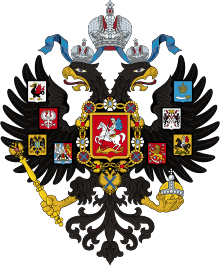Petrodvorets Watch Factory
The Petrodvorets Watch Factory (Russian: Петродворцовый часовой завод) is one of the oldest factories in Russia. Founded by Peter the Great in 1721 as the Peterhof Lapidary Works, to make hardstone carvings, since 1945 the factory manufactures the Soviet Pobeda watches and since 1961 it has manufactured the Soviet Raketa watches. In almost 300 years of history, the factory has changed name several times. Petrodvorets is located in Saint Petersburg.
 | |
| Industry | Watch manufacturing Fashion accessories |
|---|---|
| Founded | Petrodvorets, Russia (1721) |
| Founder | Peter the Great |
| Headquarters | Petrodvorets (Saint Petersburg), Russia |
Area served | Worldwide |
Key people | David Henderson-Stewart (CEO) Jacques von Polier (Managing Director and Creative Director) Anatoly Cherdantsev (Production Director) |
| Products | Raketa Watches Pobeda Watches Raketa Mechanical Movements Raketa Fashion accessories Raketa Watch Designs |
| Revenue | $808 thousand[1] (2016) |
| -$88.1 thousand[1] (2016) | |
| $207 thousand[1] (2016) | |
| Total assets | $758 thousand[1] (2016) |
| Total equity | -$1.58 million[1] (2016) |
| Website | www.raketa.com |
.jpg)
History
Tsarist era
Initially, the factory produced luxury objects in semi-precious and precious stones for the palaces of the Tsars. We find these objects now in the Hermitage Museum in St. Petersburg, but also in most of the palaces of Europe, such as Versailles, the Louvre or Sanssouci.
Early Soviet era
In Soviet times, the plant had continued to work on precious stones. This plant had produced among others, the Mausoleum of Lenin in 1924 and the Kremlin stars in 1935.
In the prewar years, the skilled workers began manufacturing precision and measurement instruments for the Red Army and the new industry of Russian watches.
Siege of Leningrad
Destroyed by Nazi troops during the Siege of Leningrad, the plant was rebuilt from 1944 at the liberation of the city. In 1945 Joseph Stalin—who wanted to reduce USSR's dependence on imports from the West—gave the order to the factory to manufacture watches. The first watches were produced in the factory under the brand Pobeda and Zvezda. In 1961, in honor of the first cosmonaut Yuri Gagarin, the factory created its new brand, Raketa, which makes its reputation throughout the world of Communist influence.
In its glory years after the war, the plant employed 8,000 people, produced 4.5 million watches per year for Soviet citizens and the needs of the Red Army. The plant was equipped with two atomic bunkers that could accommodate 8,000 people in case of a western nuclear attack, had its own schools, university, hospital, resorts on the Black Sea, camps for Communist Youth Pioneer organization and Komsomol and its orchestras.
After 1991
Today, the plant has dramatically cut production following the troubled years of privatization and the collapse of the Soviet Union. Despite huge difficulties in adapting to the capitalist system, Raketa is one of the few (together with Vostok and Zaria) watch manufacturers, which remained after the fall of the USSR.
Tourism
Today, the factory—that was considered as strategic, and closed to visitors during Soviet times—is opened to tourism. Peterhof has an average of three millions visitors per year, the factory has become a popular tour. Guides show around the production facility that gives a feeling of traveling back to the USSR, but also to learn about clock manufacturing.[2]
Brands
From Soviet time
Raketa - luxury brand, fully manufactured in-house. The factory's high end production, Raketa was created in 1961 in honor of Yuri Gagarin's flight to space. One of the rare watch brands in the world producing its movements in-house from A to Z, Raketa is famous for its watches made for cosmonauts, polar expeditions, pilots and military.[3]
Pobeda - affordable, loaded with history. Founded by Stalin himself in 1945, Pobeda is probably Russia's most popular brand for the last 100 years. First watch to have been in space in 1961, Pobeda has always been a popular and affordable Russian brand.[4]
From Tzarist times
Talberg is a watch brand owned by the factory since before the Revolution. The Factory is considering relaunching it in the coming years as a niche brand.
Imperial Lapidary Work of Peterhof. This is how the factory was named before 1917. As a brand it belongs to the Petrodvorets Watch Factory and from time to time you hear of a multi-million piece sold in auctions in London under that name.[5][6]
Names used by the factory
- 1721 - 1917, Imperial Fabric of Peterhof or - Imperial Lapidary Work of Peterhof
- 1917 - 1949, TTK nr 1 or - TTK1
- Since 1949, Petrodvorets Watсh Factory or - Petrodvorets Watch Factory "Raketa" or - Peterhof Watch Factory
References
- "Бухгалтерская отчётность". Retrieved 26 October 2018.
- "Archived copy". Archived from the original on 2016-01-29. Retrieved 2016-01-17.CS1 maint: archived copy as title (link)
- "Archived copy". Archived from the original on 2015-08-03. Retrieved 2016-01-17.CS1 maint: archived copy as title (link)
- Fascials, Nina (May 19, 2015). "Jacques Von Polier : « Il était grand temps que les Russes apprennent à faire pousser des pommes »". Le Courrier de Russie (in French). Archived from the original on July 1, 2018. Retrieved September 16, 2019.
- "Archived copy". Archived from the original on 2016-03-04. Retrieved 2017-10-08.CS1 maint: archived copy as title (link)
- "Archived copy". Archived from the original on 2015-07-22. Retrieved 2015-07-18.CS1 maint: archived copy as title (link)
- Sukhorukova A. E. / Watches: The Case of a Masters, Publisher: Det. USSR 1983. 108 pages;
- Tioutenkova A. G. / To Make the Time, Publisher: Lenizdat, USSR 1986, 181 pages.
